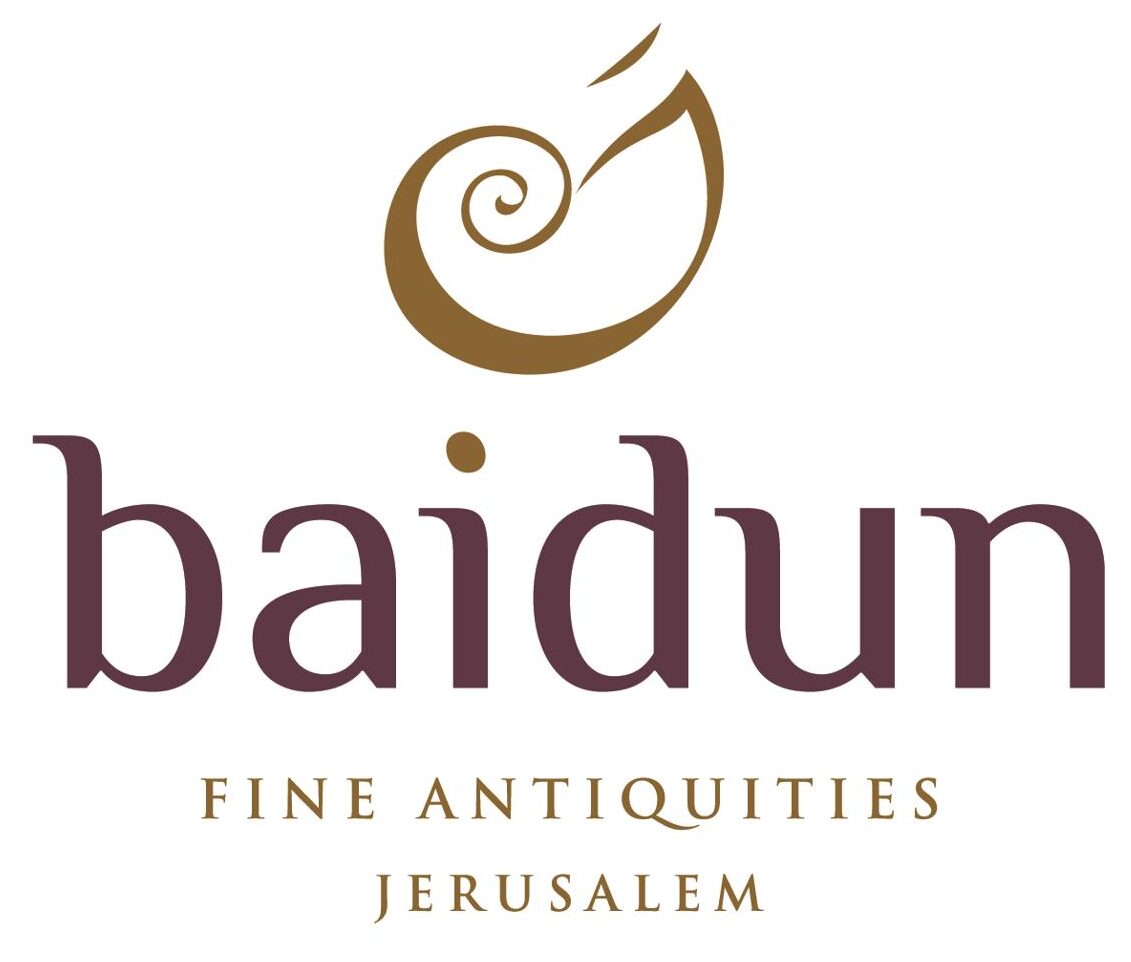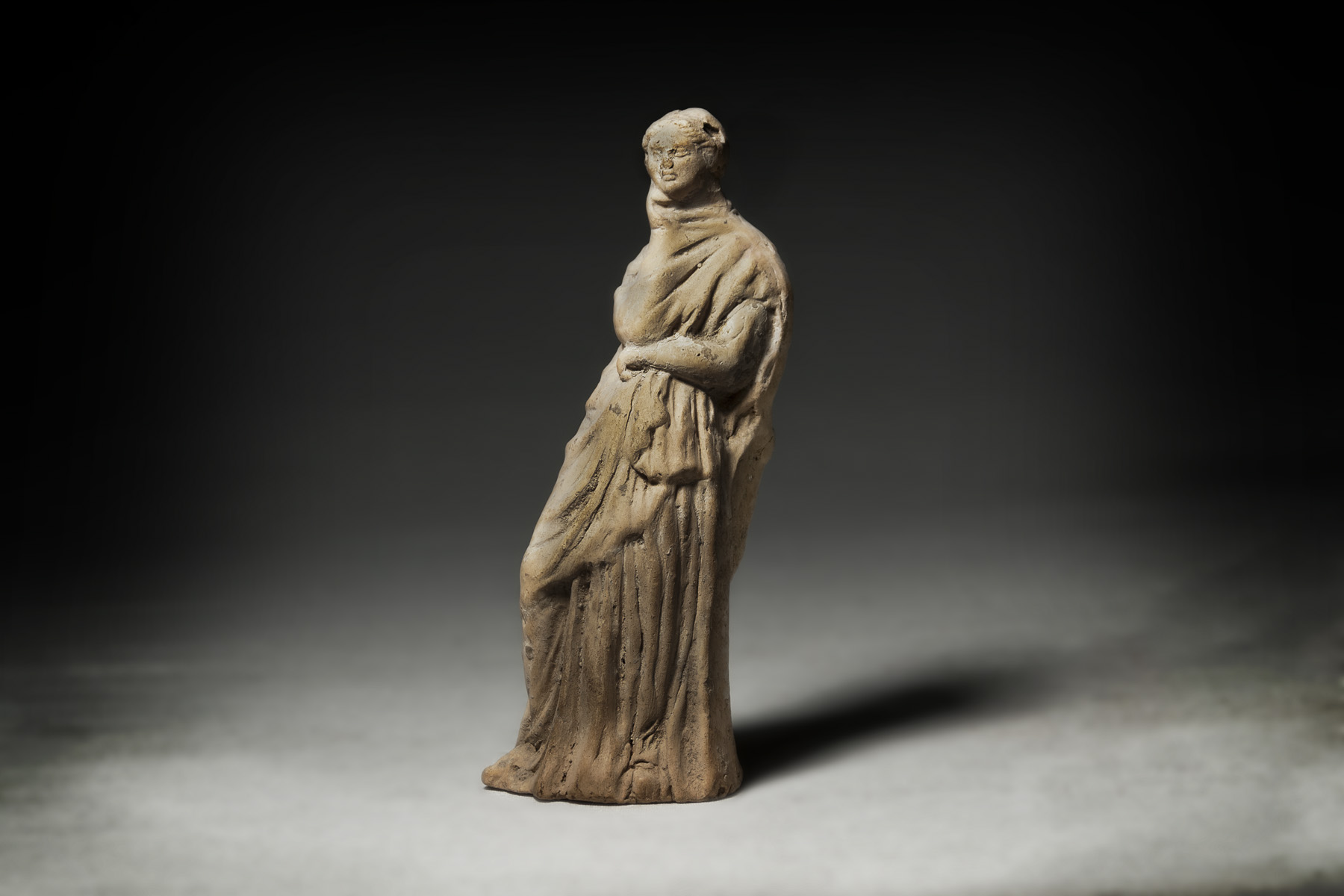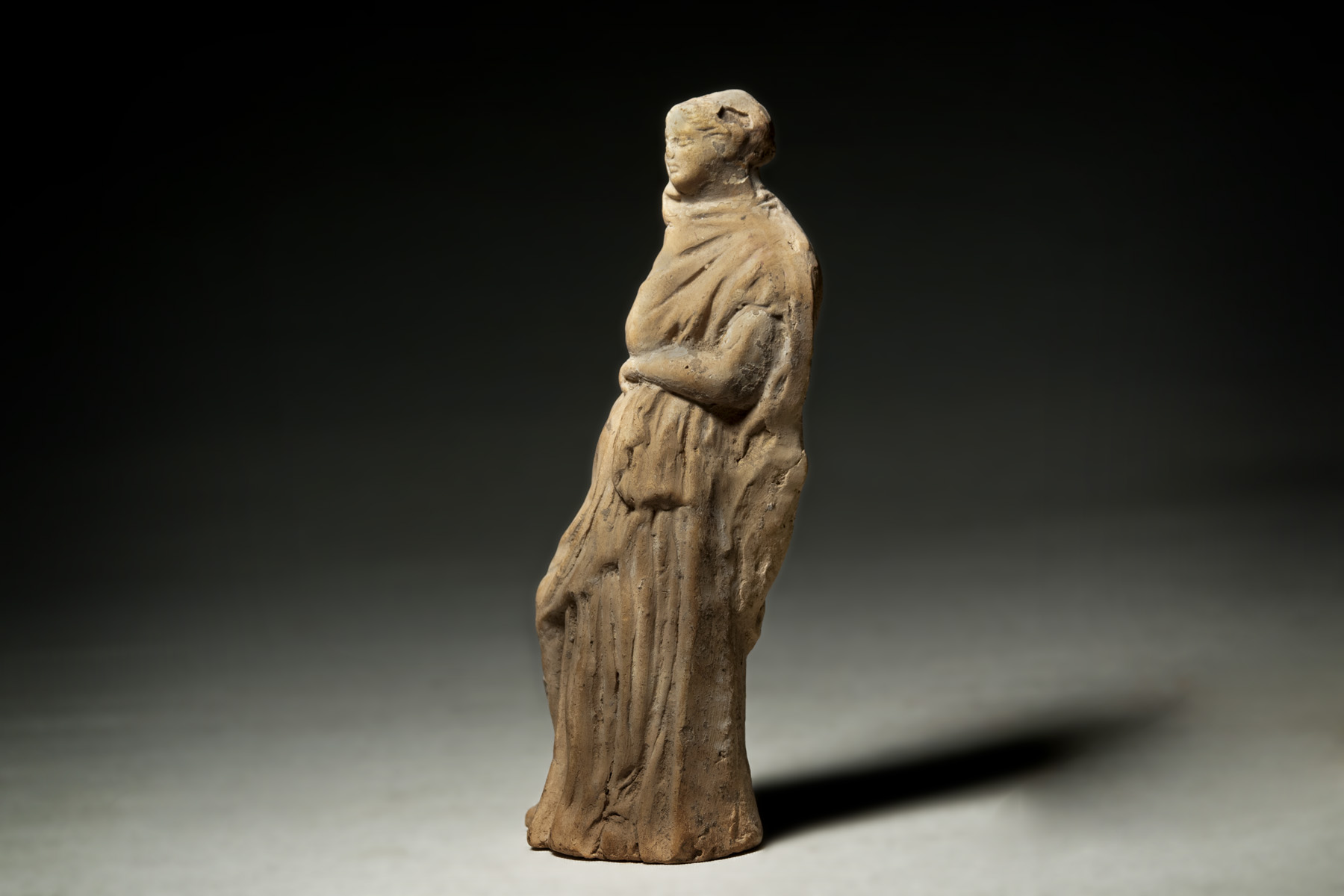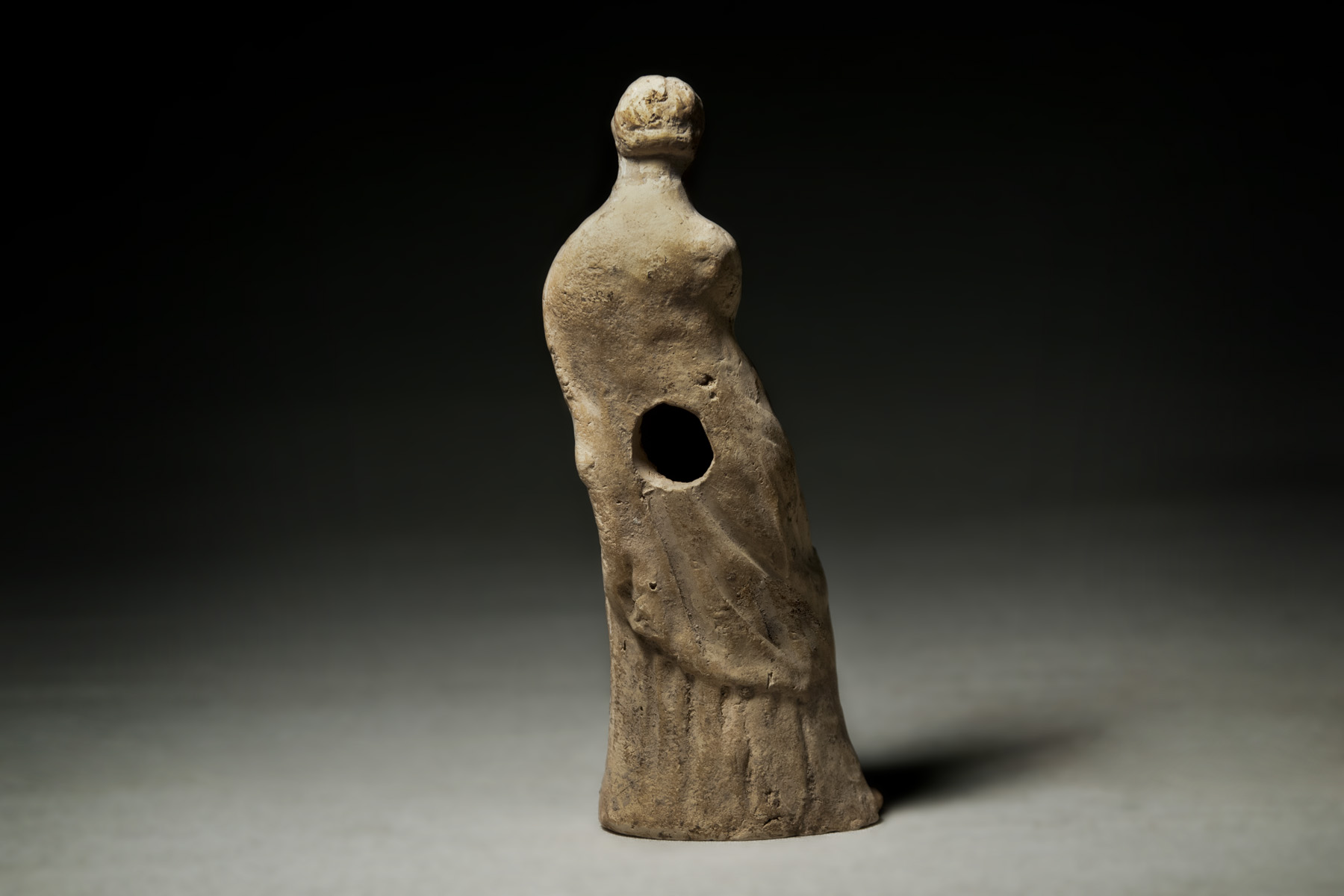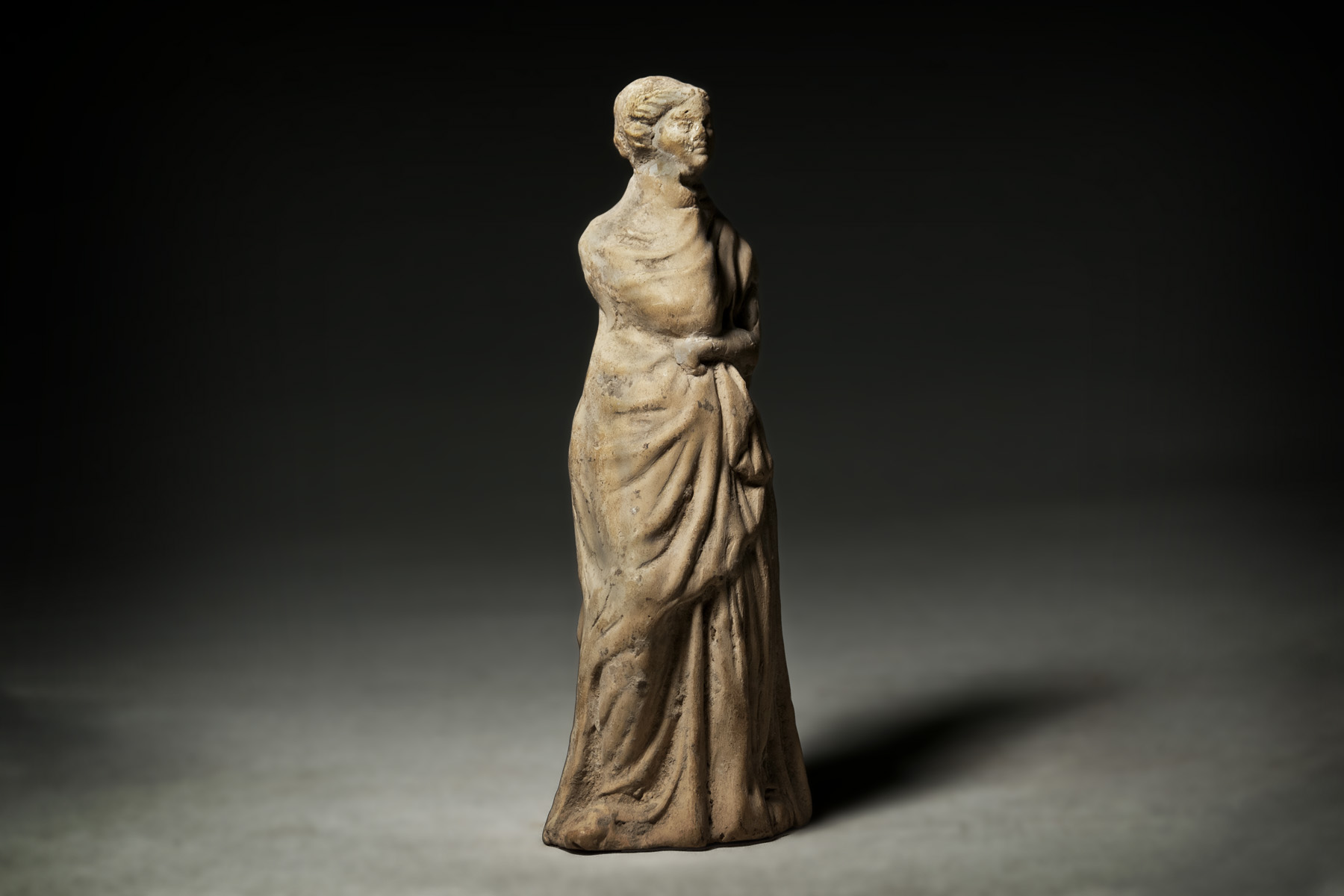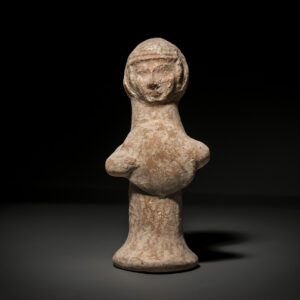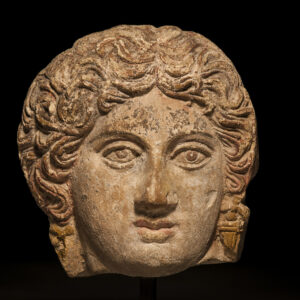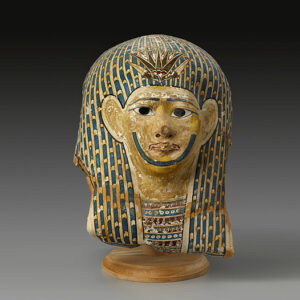This standing female figure with her head leaning on her right hand over her left arm is dressed in a chiton and himation, which covers her arms, torso, and thighs. Following the tradition for Tanagra figurines, the drapery folds are crisp and sharply tooled, giving the impression of a sculpture rendered in bronze. The details of her face are in the finest Athenian miniaturist tradition for the end of the fourth century B.C.E., distinguished by round eyes, a wide-bridged nose, full cheeks, and a small, delicate chin. Her hair, parted in the center and pulled back in a twist at the back.
The Tanagra figurines were a mold-cast type of Greek terracotta figurines produced from the later fourth century B.C.E., primarily in the Boeotian town of Tanagra. They were coated with a liquid white slip before firing and were sometimes painted afterwards in naturalistic tints with watercolors, such as the famous “Dame en Bleu” (“Lady in Blue”) at the Louvre. Scholars have wondered why a rural place like Tanagra produced such fine and rather “urban” style terracotta figures. Tanagra figures depict real women — and some men and boys — in everyday costume, with familiar accessories like hats, wreaths or fans.



